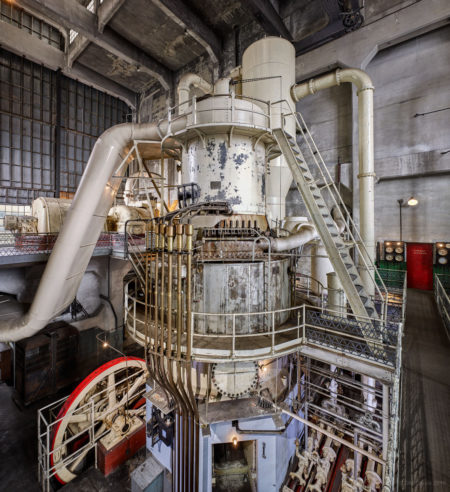
1906 steam plant to become a museum and cultural center
Seattle City Light has signed a long-term lease and operating agreement with the newly formed Georgetown Steam Plant Community Development Authority (GTSPCDA), a non-profit organization dedicated to continued public use and restoration of the building. The agreement allows the GTSPCDA to assume programming and operations of the Georgetown Steam Plant, a nationally recognized and historically significant landmark in Seattle’s historic Georgetown neighborhood in the heart of the Duwamish Valley.
The GTSPCDA intends to increase programming hours as permitted and tackle the restoration in phases, resulting in a community-centered and interactive space where arts, culture, education and science collide. Sam Farrazaino is the lead of the GTSPCDA team and is building on his past successes of redeveloping industrial properties for arts and cultural uses. As founder of Equinox Studios, Farrazaino has championed affordable space for artists and artisans and fostered an engaged relationship with the Georgetown community and beyond.
“Partnerships like the one between the GTSPCDA and City Light are what our communities are asking for,” said Seattle Mayor Jenny Durkan. “The Georgetown Steam Plant will intersect our city’s rich history with arts, culture and education and provide an example of how public entities and non-profits can collaborate to empower their communities.
The steam plant, decommissioned in 1977, sat vacant for decades. In 2014, City Light began opening the historic resource to the public for monthly open houses, tours, field trips, film shoots and art events. Recognizing the public’s enthusiasm for access to the space, in 2018 City Light issued a Request for Proposals for a non-profit to fully program and manage the building. The utility selected the GTSPCDA’s proposal in early 2019.
City Light General Manager and CEO Debra Smith believes the partnership between the two entities will continue the legacy of this renowned landmark.
“The Georgetown Steam Plant is an integral piece of City Light’s history,” said Smith. “I’m excited for this partnership’s promise and to witness GTSPDCA’s vision come to life in this historic space. Together, we will continue to illuminate our community for generations to come.”
City Light received $100,000 from the King County Building for Culture grant program in 2016 to begin the major restoration required of the building. While early restoration has begun, the GTSPCDA’s ability to increase programming for the public will be a driver in future fundraising efforts, with the full restoration of the building to meet all code requirements, including seismic retrofitting and ADA compliance, is estimated at $20 million.
King County Executive Dow Constantine lauded the partnership for its innovative approach of bringing history and community education together in a vital space for the region.
“The partnership between GTSPCDA and City Light will provide a vibrant space, creating jobs and benefiting the Georgetown community and beyond,” said Constantine. “King County is pleased to provide a grant to enhance the steam plant and for it to become a thriving space for all.”
“We would like to thank City Light for their continued preservation and stewardship of the Georgetown Steam Plant and their investments to restore its grandeur and activate it as a public resource,” said Farrazaino. “We are excited to partner with City Light and the community to power this incredible piece of Seattle’s history into its next 100 years; give it a new life, born of equity, inclusion, and environmental justice; reinvigorate it through community activation; and create a historic, scientific, artistic and cultural resource for Seattle.”
The Georgetown Steam Plant, a National Historic Landmark, stands today as a reminder of the era of electrification of America’s cities and a time when industry was first attracted to Seattle by its inexpensive hydroelectric power and electric trolley car system. Built in 1906-1907 by the Seattle Electric Company, the plant was purchased in 1951 by the City of Seattle Department of Lighting – today’s Seattle City Light – which continued to operate the plant on a very limited basis, until the 1970s. In recent years, City Light has been working to restore the plant and has partnered with community volunteers to staff the open houses held each month.
